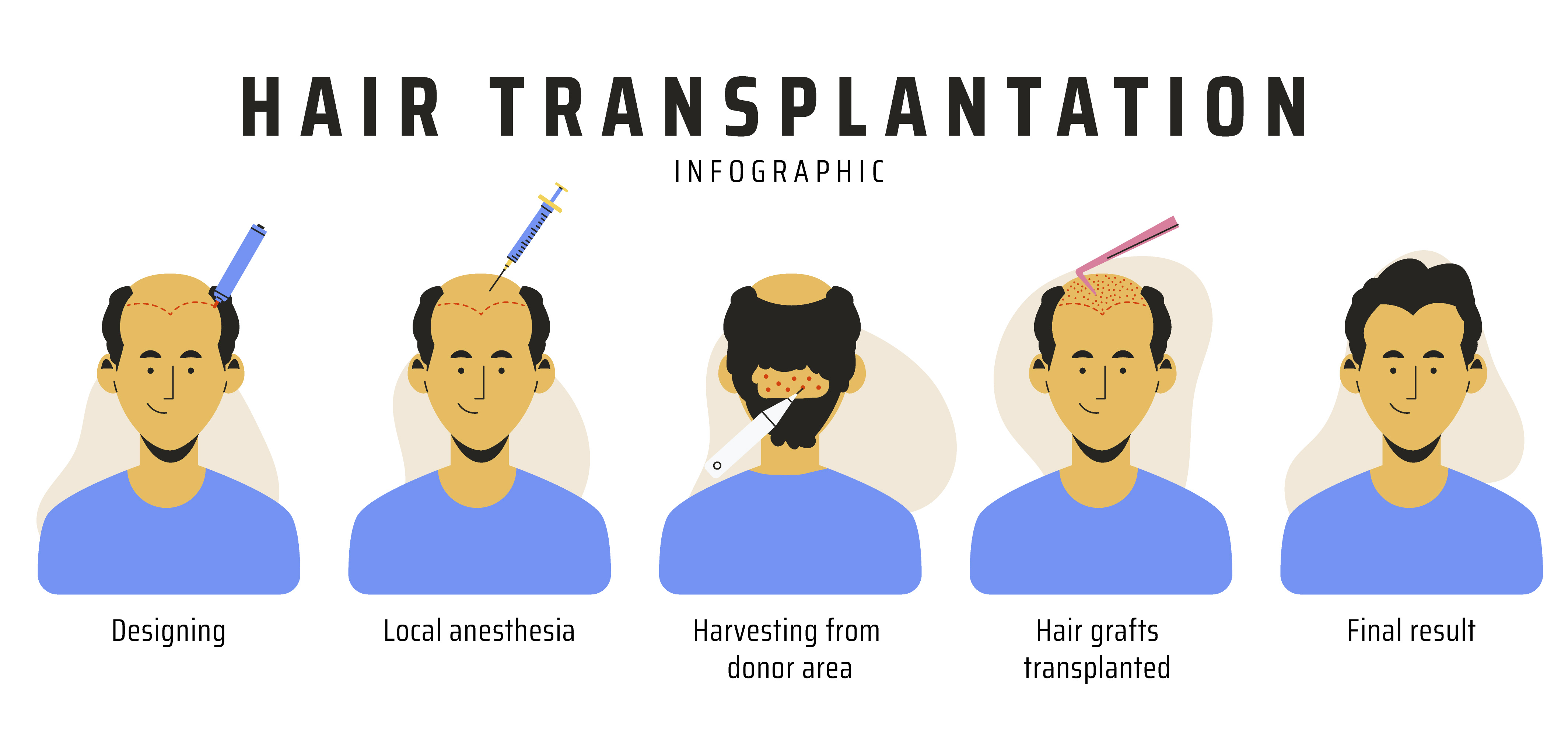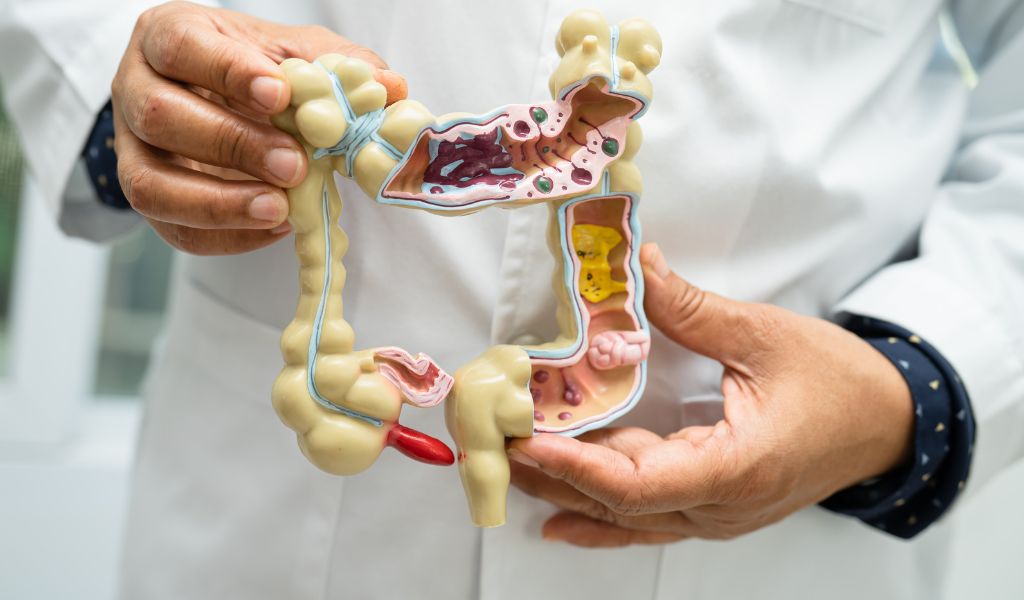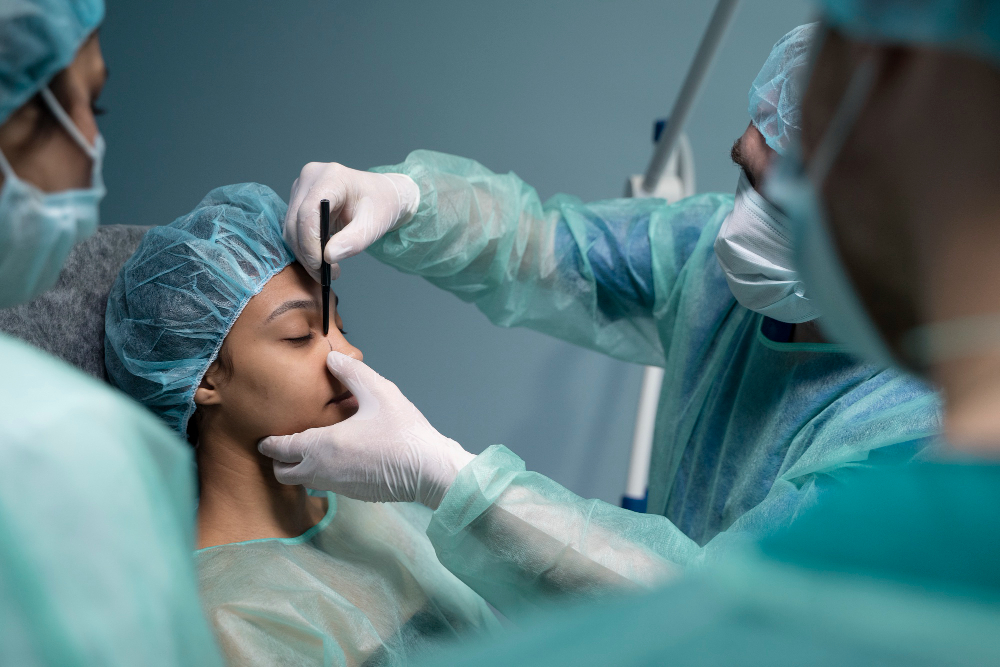
Understanding The Differences Between FUE And FUT Hair Transplants To Make The Best Choice For You
Hair transplants have been around since the late 1800s, though the purpose was different. At that time, surgeons performed hair transplants to combat the effects of medical conditions that caused hair loss, such as the disease known as favus. Hair transplants also aided in the restoration of hair for burn victims. The transplantation of tissue and follicles from a healthy portion of the scalp to the impacted areas proved successful. In the mid-twentieth century, a surgeon performed the first cosmetic hair transplant. Since then, new technology and techniques have changed this procedure dramatically.
Today, men and women who suffer from hair loss can undergo a hair transplant for medical or cosmetic reasons. These procedures are safe and effective. The ability to take a follicle from a healthy portion of the scalp and implant it into another area is a monumental medical advancement. Hair transplants can help patients with hair loss regain a thick and lush head of hair. Let’s explore the two techniques that are in use in modern times.
Follicular Unit Extraction (FUE)
When performing FUE, the surgeon will make small punches or “holes” in the patient’s scalp. Next, the surgical team begins removing follicles from the head, carefully extracting them to avoid damaging the follicles. The team will clean the patient’s scalp before moving on to the next step. Once the follicles are ready to transplant, the surgeon will make tiny incisions in the balding area of the scalp, again using the hole punch method. The team places the follicles in these incisions, ultimately leading to hair growth in this location over several months.
Advantages And Disadvantages Of FUE
- Advantages: FUE is the most widely used hair transplant technique today. This popularity is partly due to the small incisions and minimal scarring. Another advantage is that this procedure is significantly quicker than other surgical hair transplants. The benefits of a rapid recovery and an overall less invasive procedure make follicular unit extraction an attractive option for anyone experiencing hair loss.
- Disadvantages: The primary drawback of FUE is the smaller number of follicles extracted. This limitation prevents this technique from being as effective on a larger area of the patient’s scalp. Since the follicles removed with FUE have no protection, some can become damaged and may not produce growth. FUE may limit future extraction from the donor site due to the tiny punch scars this method produces.
Follicular Unit Transplantation (FUT)
At the beginning of the procedure, the surgeon will remove a strip of skin from the donor site. This location may be on the sides or back of the head, where hair is more resistant to falling out. Next, the team will ensure the scalp is cleaned and prepared for the transplant. They will then divide the strip of skin containing hair follicles into small grafts. The surgeon will place these grafts into incisions they have made in the scalp, targeting the area where the patient is experiencing hair loss. Hair will begin to grow from these grafts after three to four months.
Advantages And Disadvantages Of FUT
- Advantages: FUT is a valuable technique for patients with large areas of hair loss. The many follicles the surgeon can implant from the donor site provide an excellent basis for future hair growth. This method can produce an average of 1,000 grafts more than others. Follicular unit transplantation does not require that the patient shave their head before the procedure. Existing hair will usually cover the wound left from the strip of extracted skin at the donor site.
- Disadvantages: The average recovery time from FUT is ten to fourteen days, though some patients may have a longer healing period. Patients of FUT may experience linear scarring after the procedure, though the surrounding hair usually covers the scar. In rare cases, patients may require an additional hair transplant to hide this scar. Follicular unit transplantation can also cause the scalp to be itchy and tight. If the scalp is tight, this lack of excess skin can prevent patients from having a future FUT should a follow-up procedure be necessary for more hair growth.
What Should You Avoid After A Hair Transplant?
Many activities and products can interfere with your recovery and results after a hair transplant. We’ll cover a few of the crucial ones here. If you choose to have a hair transplant in Raleigh, Dr. Sumeet Jindal is extremely skilled and highly experienced in hair restoration. He will supply you with a thorough list of things you should and shouldn’t do during your recovery. Following these instructions will help you have a successful hair transplant by Dr. Jindal.
- Refrain From Exercising: Too much exertion causes your blood pressure and heart rate to rise. This elevation can lead to more bruising and swelling after surgery. Using energy to exercise when your body needs it for healing can also slow your recovery. Wait at least a week or two before resuming physical activity.
- Don’t Smoke Or Vape: Both vaping and smoking affect the body’s oxygen supply, which can delay your healing. Good circulation is necessary to see positive results from your surgery. Smoking or vaping can diminish your body’s hair regeneration ability.
- Avoid Pressure On Your Scalp: Don’t touch or scratch your scalp for several days post-operation. Putting pressure on your scalp can irritate the transplant area and damage hair follicles. Touching your scalp may transfer bacteria to the incisions that could cause infection.
- Don’t Use Ice Packs Or Heat: Extreme temperatures are not optimal for hair growth. Ice and heat can damage the outcome of your hair transplant. If post-surgery swelling is an issue, you should consult your surgeon. You may be able to apply a cold, sanitary compress to your scalp.
- Stop Alcohol And Caffeine Intake: Your surgeon will likely have advised you to refrain from drinking alcohol and possibly caffeine before your hair transplant. Consumption of these products can interfere with your blood flow and lessen the results of your surgery. Don’t drink caffeinated or alcoholic drinks for five to seven days after your procedure.
- Avoid Direct Sunlight: Don’t go into direct sunlight for extended periods for the first few weeks after surgery. The results of your transplant may suffer if your scalp gets sunburned from too much time outdoors. You can wear a hat after day three of your post-op recovery to protect your head from the sun.
Frequently Asked Questions
When Can I Wash My Hair After A Hair Transplant?
After a hair transplant Raleigh, you should wait at least three to seven days before washing your hair. Follow your surgeon’s instructions for a more precise timeline for washing your hair. When you reach the point of being able to clean your newly transplanted hair, you should start by gently massaging your scalp. After applying a mild, pH-balanced shampoo, you can clean your scalp, carefully washing the areas near the donor and transplant sites. Don’t apply too much pressure to any area of your scalp. Using only warm water–not hot–rinse your head thoroughly. You should refrain from using a blow dryer on your hair, allowing it to air dry instead. These steps will help you see better results from your hair transplant.
Is Hair Grown Through A Hair Transplant Permanent?
A hair transplant is a permanent procedure. It is possible–and usual–to lose some hair around three months post-operation. You should also begin to notice new growth at this time. This hair is permanent, and you can treat it like the rest of your hair. You can color your transplanted hair, cut it, and style it any way you want.
Will Hair Grow Back At The Donor Site After A Hair Transplant?
Follicles produce hair growth. After the surgeon extracts a follicle, the donor site this follicle comes from will no longer produce hair. However, surgeons strategically remove follicles at various points, usually at the back and sides of the patient’s head. The hair is thickest in these areas and more resistant to hair loss. This technique ensures plentiful hair surrounds the section of the scalp where the surgeon harvested the follicles.
What Are Non-Surgical Hair Restoration Options?
A popular alternative to a surgical hair transplant is known as PRP. Platelet-rich plasma treatments are a series of injections into the scalp that promote hair growth in areas where restoration is necessary. The patient will have their blood drawn at the beginning of their session. Once they have spun the blood in a centrifuge to separate the plasma, the provider will inject it into the patient’s scalp. This substance stimulates the production of new cells, which helps generate growth.
Non-surgical hair restoration can be a good option for younger patients. A surgical hair restoration is not as beneficial for patients who don’t have an established hair loss pattern. This pattern usually becomes evident in slightly older patients. If a younger patient undergoes a hair transplant, they may lose hair in additional places, requiring another surgery.
Conclusion
The invention of the hair transplant has helped many people achieve a full and healthy head of hair. Advancements in medical technology have provided us with two techniques of hair transplantation: FUE and FUT. Each method has advantages and disadvantages; however, both are viable options for patients seeking a restored and youthful look.

Where To Buy Qualified Cistanche Tubulosa Supplements?
As the quest for natural health supplements gains momentum, the rare Cistanche Tubulosa stands out for its potential benefits, which include anti-aging properties and immune support. Known as the ‘ginseng of the deserts’, sourcing authentic Cistanche Tubulosa supplements can be daunting for consumers. This guide will discover some benefits of Cistanche Tubulosa supplements and where to purchase high-quality Cistanche Tubulosa supplements.
What Are Cistanche Tubulosa Supplement?
Cistanche Tubulosa is a flowering plant native to desert regions of China, Mongolia, and Kazakhstan. Traditionally used in Chinese medicine, this supplement is believed to promote sexual health, immune function, and anti-aging properties.
It contains compounds such as echinacoside and acteoside that may support cognitive function and overall vitality.
Cistanche Tubulosa supplements have gained popularity recently due to their potential health benefits. In addition to promoting sexual health, immune function, and anti-aging properties, Cistanche Tubulosa supplements may also support cognitive function and overall vitality.

Benefits of Cistanche Tubulosa Supplements
Increase Testosterone Level
Initial research indicates that cistanche might enhance testosterone production by activating enzymes in the testicles.
Although this is derived from animal studies, the potential benefits are encouraging, including increased sperm count and improved mobility.
Cistanche Benefits For Immune Systems
Long-term studies have shown that distance polysaccharide regulates the body’s immunity by boosting lymphocyte proliferation and enhancing phagocyte activity.
Researchers have evaluated the impact of crude polysaccharides of Cistanche on activating dendritic cells and found that it can increase specific antibody levels, promote lymphocyte proliferation, and regulate cellular immunity.
Good For Digestive And Constipation
While many studies have focused on the myriad health benefits of Cistanche, its effects on digestive issues like constipation are particularly noteworthy.
The polysaccharides present in Cistanche have been shown to promote the growth of beneficial gut flora, which plays a critical role in maintaining healthy digestion and regular bowel movements.
Additionally, by supporting intestinal health, Cistanche may help to alleviate symptoms of constipation and improve fecal consistency, contributing to overall digestive well-being.

Enhance Brain Health
The glycosides found in Cistanches have been shown to enhance learning and memory while also protecting the brain.
This enhancement is achieved through various mechanisms, including increased enzyme activity removal, decreased lipid oxidation, reduced brain calcium content, and inhibition of brain cell apoptosis. These properties contribute to the overall cognitive support provided by Cistanches.
Cistanche’s Anti-Aging Properties
Compounds found in Cistanches possess potential anti-aging properties. These effects are believed to stem from the antioxidant capabilities of Cistanches.
Furthermore, the immune theory of aging proposes that enhancing immune functionality may contribute to decelerating aging.
Research indicates that the components derived from Cistanches can eliminate detrimental substances and safeguard DNA integrity, thereby playing a vital role in combating aging.
Cistanche May Improve Mental Health
Parkinson’s disease is a chronic condition affecting the central nervous system. Research indicates that Cistanche has a protective effect on nerves.
Cistanche polysaccharides have neuroprotective effects, inhibiting oxidative stress and protecting against nerve damage. These defensive advantages can contribute to enhanced mental well-being.
How Much Does Cistanche Tubulosa Supplement?
The price of Cistanche tubulosa supplements can vary depending on factors such as brand, formulation, dosage, and quantity.
Generally, you can expect Cistanche tubulosa supplements ranging from around $10 to $50 or more per bottle, with higher prices often associated with higher quality or higher potency products.
It’s always a good idea to compare prices from different brands and sources to find the best value for your needs.
Where To Buy Qualified Cistanche Tubulosa Supplements?

Are you looking for a reputable place with guaranteed quality to buy Cistanche Tubulosa Supplement? Come to Vinatura – a reliable address for health lovers.
Vinatura is a dedicated team of highly experienced professionals who are passionate about promoting wellness in every aspect of life.
At Vinatura Supplements, quality is the cornerstone of everything they do. Their unwavering commitment to you is to craft the finest quality nutritional supplements by harnessing the power of state-of-the-art manufacturing techniques and selecting only the purest nutrients that nature has to offer.
Their philosophy at Vinatura revolves around transparency and truth. Vinatura believes in providing products that meet the highest quality standards without any unnecessary fillers or artificial ingredients.
By prioritizing natural ingredients and utilizing effective formulas, Vinatura aims to enrich lives and empower individuals to lead healthier, more vital lives.
Rest assured that each of their products undergoes meticulous scrutiny and is created under superior standards with rigorous quality testing procedures in place. Every step of their manufacturing process is intentionally designed to serve your well-being.
Vinatura Supplements – Best Brand To Buy Cistanche Tubulosa Supplements
●Hotline: +1 302-306-0899
●Email: support@vinatura.store
●Website: vinatura.store

Demystifying LASIK Surgery: Common Questions Answered
Laser-assisted in situ keratomileusis, most commonly known as LASIK, has become one of the most sought-after elective procedures globally, offering a high success rate for patients dealing with nearsightedness, farsightedness, and astigmatism.
If you’re considering LASIK eye surgery in Dubai, you’re embarking on a journey towards visual freedom. Its beauty lies in its potential for permanent effects, liberating you from the constraints of glasses or contact lenses. Advanced technology has increased the effectiveness of LASIK and made the procedure more affordable in recent years.
In this guide, you’ll get the answers to the most common questions surrounding LASIK, providing insights that can help you make an informed decision for your eye health.
1. How does LASIK work?
LASIK is a revolutionary procedure designed to alter the cornea’s shape permanently. This transformation aims to improve your eyesight, bringing it to a normal or near-normal state.
Here’s a step-by-step breakdown of the LASIK procedure:
Step 1. Numbing drops
To ensure your comfort during the procedure, your eye surgeon will put numbing drops into your eyes. This eliminates any potential pain, making the experience as smooth as possible.
Step 2. Suction ring and eyelid speculum
Next, a painless suction ring and eyelid speculum are placed on your eye. These devices serve the essential purpose of keeping your eye in the correct position and preventing involuntary blinking. You might feel a slight pressure on your eyelid, but rest assured, it’s a normal sensation for this procedure.
Step 3. Creating the corneal flap
Your eye surgeon will then make a thin flap in your cornea. Imagine this as lifting and folding a page in a book. This step is crucial as it provides access to the underlying corneal tissue for the laser reshaping process.
Step 4. Laser reshaping
With your corneal flap gently lifted, you’ll be asked to focus on a light aimed towards your eye. Simultaneously, a precision laser is employed to reshape your cornea.
You might hear a clicking sound during this stage, and there might be an unusual smell. Rest assured, it’s not your eyes burning; it’s simply a byproduct of the laser’s interaction with the cornea.
Throughout the laser treatment, your doctor monitors your eye’s position closely. If any movement is detected, the laser automatically halts, ensuring precise and accurate corrections.
Step 5. Corneal flap replacement
Once the laser reshaping is complete, the corneal flap is returned to its original position carefully. It begins reattaching immediately and continues to heal after you leave the surgical facility.
2. Does LASIK hurt?
One of the primary concerns for those considering LASIK is the fear of pain during and after the procedure. Fortunately, LASIK is designed to minimise discomfort, and technological advancements have made the process remarkably smooth.
Before the procedure begins, your eye doctor applies numbing drops to ensure that you won’t feel any pain throughout the surgery. While some patients might experience slight pressure or sensations, the overall consensus is that LASIK is a relatively painless process.
Immediately following the surgery, you may notice a gritty feeling, itching, burning, and increased tear production. These are normal and typically subside as your eyes start to heal.
Generally, pain is minimal. Many patients report feeling little to no pain during the recovery period. Your eye doctor may provide pain medicine or recommend eye drops to keep you comfortable in the hours following the procedure.
3. Am I a candidate for LASIK surgery?
If you’re considering LASIK, you must understand the conditions it can address and the factors determining whether it’s the right solution.
Some of the conditions LASIK can address include:
- Nearsightedness (myopia): This is when an eyeball has a slightly longer than typical or sharply curved cornea, making distant objects appear blurry while close ones remain clear.
- Farsightedness (hyperopia): This condition is often a result of a shorter-than-average eyeball or a flat cornea, causing blurry near vision or, at times, distant vision.
- Astigmatism: This is characterised by an uneven curvature of the cornea, which can affect both near and distant vision.
If you currently wear contact lenses or eyeglasses, LASIK might be a suitable option. Your eye doctor in Dubai will assess whether LASIK or a similar refractive procedure aligns with your specific needs and preferences.
However, not everyone is an ideal candidate for LASIK. Approximately one in five individuals seeking LASIK have conditions that may limit their eligibility. These conditions include:
- Unstable Vision: If your prescription frequently changes, LASIK may not be the most suitable option.
- Extreme Refractive Errors: Individuals with extreme nearsightedness, farsightedness, or astigmatism may require alternative solutions.
- Corneal Thickness: LASIK involves reshaping the cornea. So, if your corneas aren’t thick enough for the procedure, your doctor may recommend an alternative approach.
- Severe Dry Eye Disease: Pre-existing dry eye conditions may impact your candidacy for LASIK.
- Keratoconus: A progressive thinning of the cornea may require different interventions.
- Cataracts: LASIK isn’t designed to treat cataracts, and cataract removal may be necessary before considering refractive surgery.
- Other Medical Conditions: Conditions such as glaucoma, diabetes, or autoimmune diseases may need careful consideration before opting for LASIK.
4. How long will my vision be blurry after LASIK?
Blurred vision is normal immediately after LASIK. While improvement is noticeable within a few days, it can take up to two to three months for your eyes to fully heal and your vision to stabilise.
Remember, the blurriness you experience is temporary, and the extent of improvement depends partly on your pre-surgery vision. Patience and adherence to post-operative care instructions are key to achieving optimal results.
5. How many days of rest is required after LASIK surgery?
Recovering from LASIK is swift, with many individuals able to resume daily activities within a few days. While the process is quick, you must exercise caution and adhere to post-operative care instructions for optimal results.
Most people can return to work or drive shortly after LASIK, but you must still exercise caution, especially if you have blurred vision. It’s advisable to wait until your vision has cleared before driving or operating tools and machinery.
Certain activities should be limited as your eyes heal. Follow your ophthalmologist’s personalised advice, but here are some general guidelines:
- Exercise and contact sports: Wait three days before engaging in non-contact sports. Give it a month before participating in contact sports like football or karate.
- Makeup and Lotions: Refrain from using makeup or lotions near your eyes for at least two weeks.
- Swimming and Hot Tubs: Wait one to two months before diving into pools, hot tubs, or whirlpools.
A Final Word
Getting your questions answered before LASIK helps you know what to expect and gives you peace of mind during the procedure. If you’re unsure about something, consult a local eye doctor for personalised insights.









